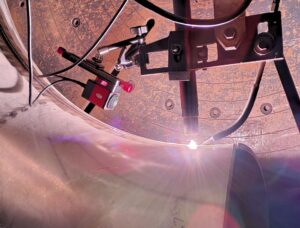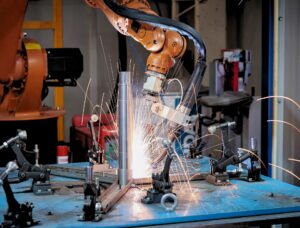Manufacturing defects in welding operations can cost companies millions of dollars annually through rework, scrap, warranty claims, and damaged reputation. However, recent advances in real-time weld monitoring systems are revolutionizing quality control, with leading manufacturers reporting defect reductions of up to 40% after implementation. Discover how real-time weld monitoring systems reduce manufacturing defects by 40% with the use of welding camera.
The Hidden Cost of Weld Defects
Traditional welding inspection methods rely heavily on post-weld testing, meaning defects are often discovered after significant time and materials have been invested. Common weld defects include:
- Porosity: Gas bubbles trapped in the weld metal
- Incomplete penetration: Insufficient weld depth
- Cracks: Hot or cold cracking in the weld zone
- Undercut: Groove melted into the base metal
- Spatter: Metal droplets expelled during welding
Each of these defects requires costly rework or, in worst cases, complete part replacement. In high-volume manufacturing environments, even a 2% defect rate can translate to hundreds of thousands of dollars in losses annually.
How Real-Time Monitoring Changes the Game
Real-time weld monitoring systems use advanced camera technology and sensor integration to observe the welding process as it happens. Unlike traditional methods that inspect after completion, these systems provide immediate feedback, allowing operators to:
- Detect problems instantly: Advanced algorithms identify anomalies in the weld pool behavior, arc characteristics, and seam formation in real-time
- Make immediate corrections: Operators can adjust parameters mid-weld to correct developing issues
- Prevent cascade failures: Early detection prevents minor issues from becoming major defects
- Document quality continuously: Complete weld documentation without stopping production
Key Technologies Driving Success
Modern weld monitoring systems integrate several technologies:
High-Speed Welding Cameras: Capture thousands of frames per second, revealing details invisible to the human eye during the welding process.
Intelligent Filtering: Advanced optical filters eliminate arc glare while maintaining visibility of the weld pool and surrounding areas.
Machine Learning Algorithms: AI-powered analysis learns normal weld characteristics and flags deviations that indicate potential defects.
Multi-Sensor Fusion: Combines visual data with thermal, acoustic, and electrical measurements for comprehensive monitoring.
Measurable Results Across Industries
Companies implementing real-time weld monitoring report significant improvements:
- Automotive manufacturers: 35-45% reduction in weld-related warranty claims
- Aerospace fabricators: 40% decrease in NDT rejection rates
- Pipeline companies: 30% reduction in repair welding requirements
- Shipbuilders: 25% improvement in first-pass weld quality
Implementation Best Practices
Successful deployment of real-time monitoring requires:
- Proper training: Operators need to understand system capabilities and how to respond to alerts
- Process standardization: Consistent welding procedures enable accurate anomaly detection
- Integration planning: Systems must integrate with existing quality management processes
- Continuous optimization: Regular analysis of monitoring data improves detection algorithms
ROI Calculation Framework
To calculate the potential return on investment, consider:
- Current rework and scrap costs
- Inspection labor savings
- Reduced warranty claims
- Improved production throughput
- Enhanced customer satisfaction
Most manufacturers see payback periods of 6-18 months, depending on production volume and current defect rates.
The Future of Weld Quality Control: How Weld Monitoring Systems Reduce Defects
As Industry 4.0 continues to transform manufacturing, real-time weld monitoring represents a critical component of smart factory initiatives. The ability to prevent defects rather than detect them after the fact fundamentally changes the economics of welded manufacturing.
Companies that embrace this technology today position themselves for competitive advantage tomorrow, with higher quality products, lower costs, and faster time-to-market capabilities.
Ready to stop weld failures before they start? Contact us today to learn how our welding camera solutions can protect your projects, your team, and your bottom line.



